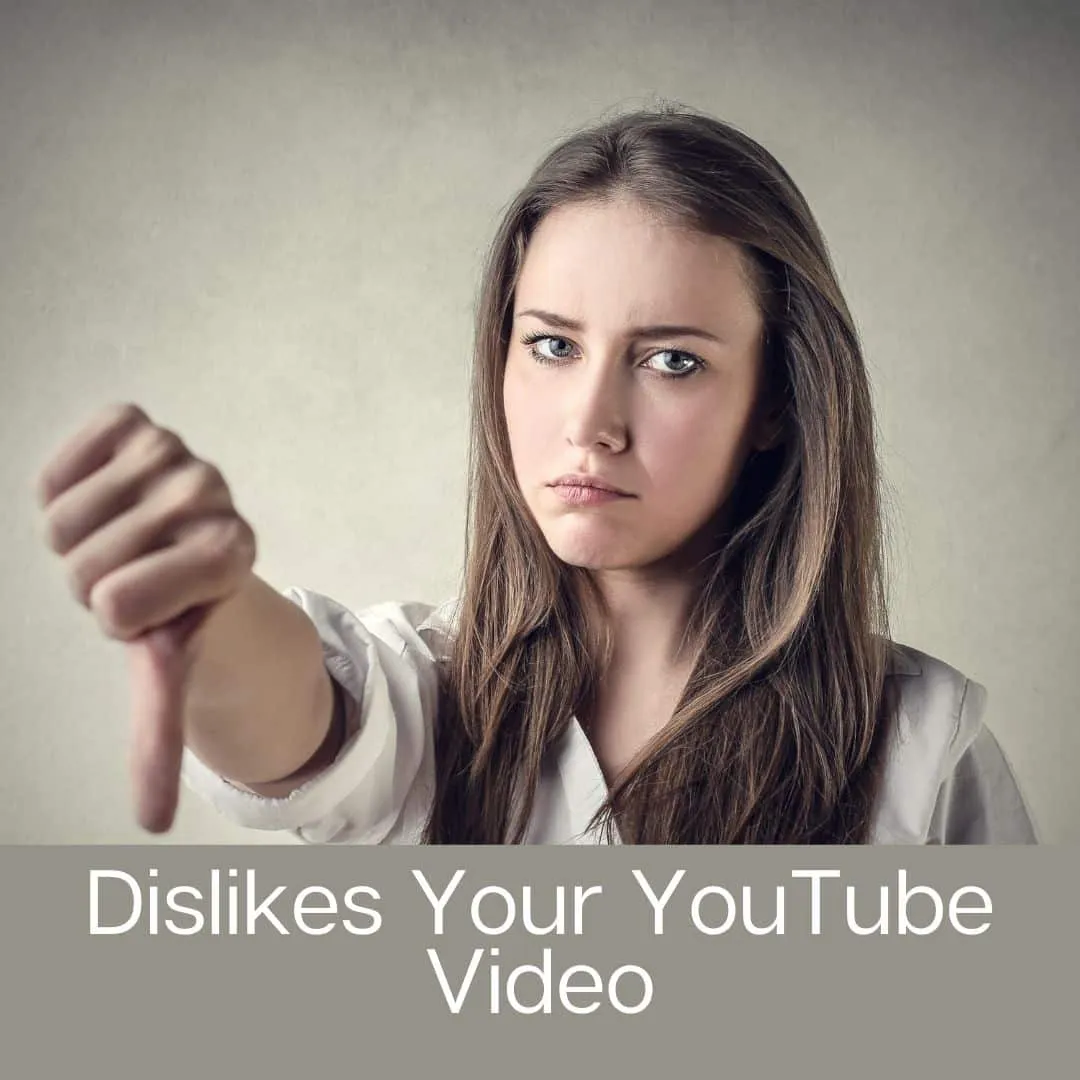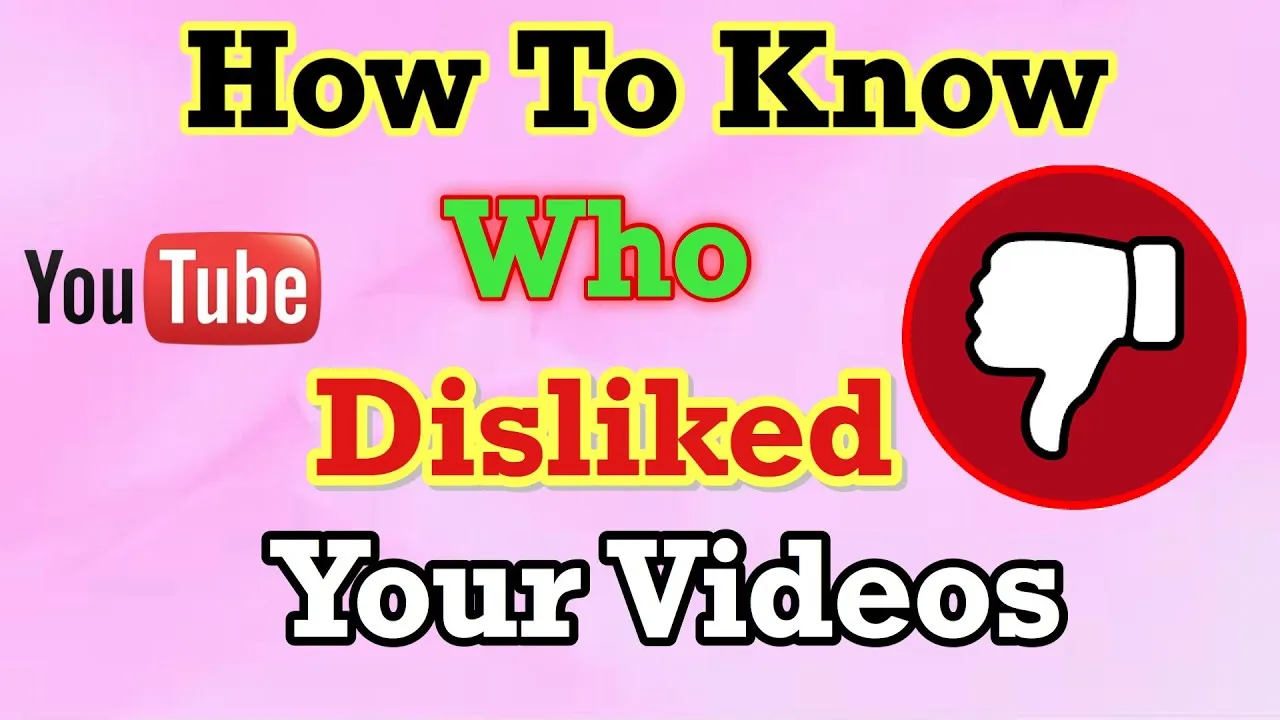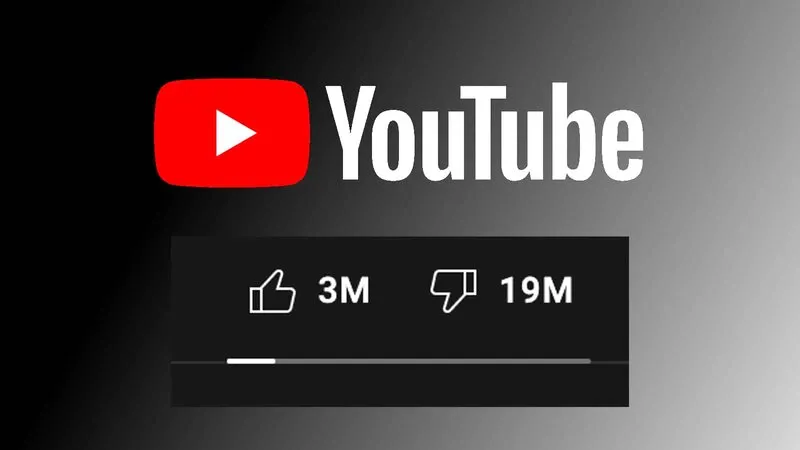Have you ever uploaded a video to YouTube and found yourself wondering who might have disliked it? You're not alone! Many content creators are curious about the reactions their videos receive, especially when it comes to the dislike button. In this blog post, we’ll dive into the details surrounding YouTube’s dislike feature and explore whether or not you can actually see who disliked your videos. Let’s get started!
The Dislike Button on YouTube

The dislike button on YouTube has been a topic of much debate among creators and viewers alike. Introduced as a way for users to express their dissatisfaction with content, it serves as a simple yet effective feedback mechanism. Here’s what you should know about it:
- Purpose: The dislike button allows users to communicate their feelings about a video. If a viewer finds a video unhelpful, misleading, or simply not to their taste, they can click the dislike button.
- Impact on Creators: For creators, dislikes can be a valuable form of feedback. They can help identify what type of content resonates with their audience and what doesn’t. It’s a learning opportunity!
- Visibility: While the number of dislikes is visible to everyone, the identities of users who click the dislike button are hidden. This anonymity is designed to promote honest feedback without fear of backlash.
- Recent Changes: In late 2021, YouTube made headlines by hiding the dislike counts from public view, although creators can still see their video analytics. This change aimed to reduce harassment and negativity on the platform.
In summary, while the dislike button serves an important purpose on YouTube, it doesn’t allow creators to see who specifically disliked their videos. This keeps the feedback process constructive and focused on content improvement rather than personal attacks.
Also Read This: How to Create Beautiful Ribbon Flowers on Dailymotion
Changes to Dislike Visibility

YouTube has undergone several changes over the years, particularly when it comes to how users can interact with videos. One of the most significant changes occurred in November 2021, when YouTube decided to make dislike counts private. This means that while you can still hit that dislike button, the public will no longer be able to see the total number of dislikes a video has received. So, if you’re wondering whether you can see who disliked your
This shift was largely implemented to protect creators from targeted harassment and dislike campaigns. YouTube’s goal was to foster a more positive environment, encouraging users to focus on constructive feedback rather than simply clicking a button to express negativity. However, many creators and viewers have mixed feelings about this change. Some believe it limits the feedback that creators receive on their work, while others appreciate the effort to minimize trolling.
Here’s a quick breakdown of what changed:
- Dislikes are now private: Only the video creator can see the total number of dislikes.
- Focus on positive engagement: YouTube aims to promote constructive feedback.
- Impact on creators: Some creators feel it limits their understanding of audience reception.
So, while you can still dislike a video, the visibility of that action has changed dramatically.
Also Read This: How to Submit Videos to Shutterstock and Get Noticed
Understanding YouTube's Privacy Policies

YouTube's privacy policies are designed to protect both users and creators, outlining how data is collected, used, and shared. These policies play a crucial role in shaping the platform's environment and your experience on it. For instance, when you interact with a video, whether by liking, disliking, or commenting, YouTube collects this data to help improve its algorithm and recommend content that aligns with your interests.
Importantly, YouTube's privacy policies also include provisions about user identification. When it comes to dislikes, the platform has made it clear that individual users' actions are anonymous. This means you can’t see who disliked your video or any other user's video, which aligns with their overall goal of creating a safe space for expression without fear of backlash.
Here are some key points to keep in mind regarding YouTube's privacy policies:
- Anonymity: User interactions, such as dislikes, are anonymous to protect privacy.
- Data Collection: YouTube collects data to enhance user experience, but personal identifiers are kept confidential.
- User Control: You have control over your privacy settings, allowing you to manage what information you share.
In summary, YouTube's privacy policies aim to strike a balance between user engagement and the need for a respectful, safe community. Understanding these policies can help you navigate the platform more effectively and appreciate the rationale behind features like dislike visibility.
Also Read This: Ultimate Guide to Downloading All Videos from a YouTube Channel for Offline Use
What You Can See About Dislikes
When it comes to YouTube, understanding the dislike feature is crucial for both viewers and content creators. While you can't see who specifically disliked your videos, there are still some valuable insights you can gather. Here’s what you can see:
- Total Dislikes Count: You can view the total number of dislikes on your video. This number is displayed next to the like button, giving you an immediate sense of how well your content is being received.
- Engagement Metrics: Dislikes are part of the overall engagement metrics of your video. While they may seem negative, they contribute to your video's analytical data, which includes likes, views, and comments.
- Viewer Feedback: Although you can't see who disliked your video, the overall count can provide feedback. A high dislike ratio compared to likes might indicate that your content isn't resonating with your audience.
- Comments Section: Sometimes, viewers express their reasons for disliking a video in the comments section. Engaging with these comments can provide you with direct insights into what your audience thinks.
Overall, while dislikes can be disheartening, viewing them through the lens of constructive criticism can help you improve your future content.
Also Read This: How to Clear Your YouTube Watch Queue Efficiently
Impacts of Dislikes on Content Creators
Dislikes can have a range of effects on content creators, both psychologically and in terms of their channel’s performance. Understanding these impacts can help creators navigate the sometimes rocky waters of online content creation.
- Emotional Impact: Receiving dislikes can be discouraging. Many creators take them personally, leading to feelings of inadequacy or disappointment. It's essential to remember that not every piece of content will resonate with everyone.
- Algorithm Influence: YouTube's algorithm considers viewer engagement when promoting content. Although dislikes are a form of engagement, a high dislike-to-like ratio can potentially harm your video's visibility in search results and recommendations.
- Content Strategy Reevaluation: A significant number of dislikes can prompt creators to reassess their content strategy. It may lead to refining their target audience or altering their content style to better align with viewer preferences.
- Community Engagement: Dislikes can also spark discussion within the community. Creators may find opportunities to engage with viewers about what they liked or disliked, fostering a sense of connection.
In summary, while dislikes can sting, they can also serve as a catalyst for growth and improvement. By focusing on the constructive aspects of feedback, creators can turn a negative experience into a positive one.
Also Read This: How to Use Fortiguard Downloader for Antispam IP Checks
7. Alternatives to Gauge Viewer Feedback
When it comes to understanding how your audience is engaging with your YouTube videos, the dislike button isn't the only tool at your disposal. While it may seem like a straightforward way to gauge feedback, there are several other methods you can explore to get a clearer picture of viewer sentiment. Here are some alternatives:
- Comments Section: One of the best places to gauge viewer feedback is the comments section. Viewers often express their thoughts, opinions, and suggestions here. Engaging with your audience in this space can provide valuable insights into what they liked or didn’t like about your content.
- Surveys and Polls: Using tools like Google Forms or social media platforms, you can create surveys to ask your audience specific questions about your videos. This helps you collect direct feedback and understand viewer preferences in depth.
- Analytics Tools: YouTube provides detailed analytics about viewer behavior, including watch time, audience retention, and demographic data. By analyzing these metrics, you can infer how well your content resonates with viewers.
- Engagement Metrics: Look beyond dislikes; check likes, shares, and subscriptions gained after a video. A high number of likes or shares may indicate that viewers enjoyed the content, even if there are a few dislikes.
- Social Media Interaction: If you promote your videos on platforms like Twitter, Instagram, or Facebook, pay attention to the feedback you receive there. Engaging with your audience on these platforms can spark discussions and provide further insights.
By employing these alternatives, you can better understand your audience's preferences and improve your content accordingly.
8. Conclusion
In a world where every click and interaction counts, understanding viewer feedback is crucial for content creators on YouTube. While the dislike button might seem like an obvious way to gauge reactions, the reality is that it's not the most effective or reliable measure. The good news is that there are various alternatives available to help you understand your audience better.
From diving into the comments section to leveraging analytics and engaging with your viewers through surveys, there are plenty of avenues to explore. Remember, feedback is a powerful tool that can drive your content strategy forward. Here are some key takeaways:
- Don't fixate on dislikes; focus on constructive feedback and engagement.
- Use analytics to inform your content decisions and understand viewer behavior.
- Engage with your audience through comments and social media for a richer understanding.
Ultimately, the goal is to create content that resonates with your audience and fosters a strong community. Embrace the feedback you receive, whether it's positive or negative, and use it as a stepping stone to enhance your YouTube journey.